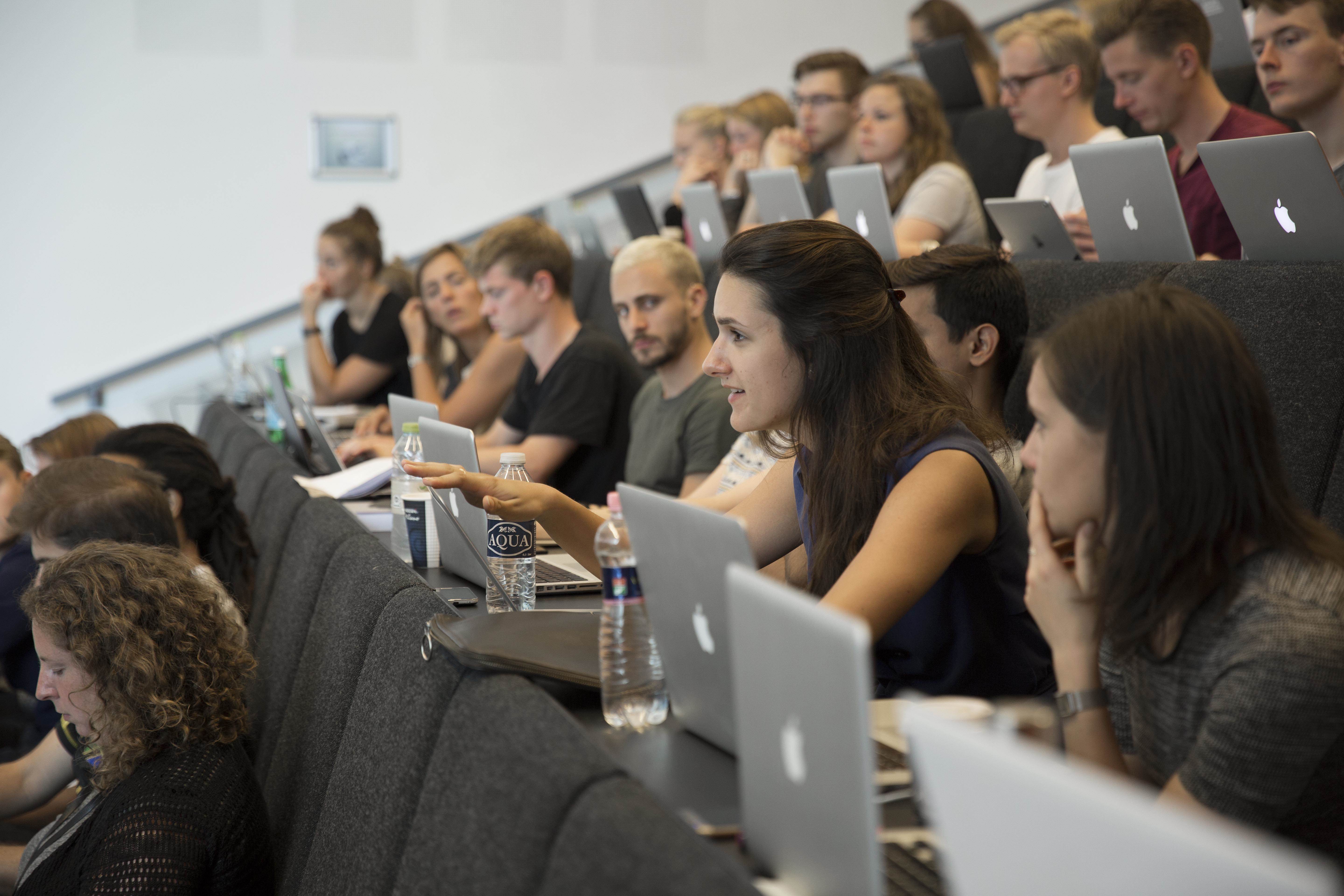IT sector is missing out on female talent - but the challenge can be solved
More gender diversity in IT is crucial or women risk missing the opportunity to develop the technologies of the future, while companies risk missing out on a large part of the talent pool. The 'Bridging the Gender Gap in IT' conference at ITU on May 29 presents American inspiration to alleviate the problem.
EventsEducationComputer Science Departmentdiversity
Written 23 May, 2017 07:06 by Vibeke Arildsen
The job opportunities and future prospects are excellent. Nevertheless, few women go for the IT subjects when choosing an education. The number of female students in technical IT education programmes has dropped since the 1970s, where about a quarter of the country's computer science students were women.
The IT University of Copenhagen is seeing small signs that this trend is turning. In 2016, almost twice as many women applied to the bachelor programme in software development as the year before, and preliminary figures from March indicate a record high number of female applicants this year.
With the conference Bridging the Gender Gap in IT on 29 May, ITU wants to pave the way for more women to make IT their career of choice. Offsetting the current gender imbalance is vital, says ITU Vice Chancellor Mads Tofte.
"Digitization affects us all, so IT developers must be able to understand the needs of all users when developing the technologies of the future. Researchers have found that creativity and productivity are higher in workplaces with a more equal gender distribution. And finally, it is crucial that more women choose an IT education if we are to meet the huge demand for IT specialists in the coming years," says Mads Tofte.
Digitization affects us all, so IT developers must be able to understand the needs of all users when developing the technologies of the future.
Mads Tofte, Vice Chancellor at ITU
"The purpose of the conference is to raise awareness of the complex causes behind the skewed gender balance and show that possible solutions to the problem actually do exist. We also want to eliminate the stereotypical belief that men are better at IT so the entire talent pool can come into play," he continues.
Positive examples from the US
Women are underrepresented in IT across Europe and North America, but several North American universities have successfully reversed the trend in recent years.
 ITU is seeing small signs that more women are increasingly turning towards IT education programmes. In 2016, the number of women who applied to the BSc in Software Development almost doubled from the year before.Attendees at the ITU conference can meet Zachary Dodds from Harvey Mudd College in California, which has managed to achieve an even balance of men and women in its computer science programme. Among other initiatives, the university has introduced differentiated education targeted to students both with and without programming experience. Typically, male students have more prior experience with programming.
ITU is seeing small signs that more women are increasingly turning towards IT education programmes. In 2016, the number of women who applied to the BSc in Software Development almost doubled from the year before.Attendees at the ITU conference can meet Zachary Dodds from Harvey Mudd College in California, which has managed to achieve an even balance of men and women in its computer science programme. Among other initiatives, the university has introduced differentiated education targeted to students both with and without programming experience. Typically, male students have more prior experience with programming.
UCLA researcher Linda Sax is also among the presenters. She leads the BRAID initiative, a major research project on diversity in IT education and will give examples of how 15 US universities are working to attract and retain women and students of colour to computer science majors.
In addition to the US input, Ida Kragh-Vodstrup from DI, Charlotte Mark from Microsoft Denmark and Eva Sophia Myers from University of Southern Denmark will give their suggestions on how Danish businesses and educational institutions can tackle gender issues.
Stereotypes limit women in their choice
Valeria Borsotti is a co-organizer of the conference and a researcher in gender diversity in IT education. According to her, cultural ideas about asocial male computer nerds play a big role in women's lack of interest in bits and bytes.
We tend to associate IT skills with men, and there is a widespread belief that men are better suited for pursuing an IT education. This affects not only the young women, but also their parents and teachers, whom we know have a huge impact on young people's choice of education.
Valeria Borsotti, Research Assistant at ITU
"Research shows that stereotypical notions play a very important role in relation to IT education. We tend to associate IT skills with men, and there is a widespread belief that men are better suited for pursuing an IT education. This affects not only the young women, but also their parents and teachers, whom we know have a huge impact on young people's choice of education. So stereotypes actually limit women in their choices," she says.
Requires a clear strategy
According to Valeria Borsotti, the challenge is not only attracting more women to education programmes like software development, however. Companies must also work to make themselves attractive to women and retaining female IT employees.
"Companies could start collecting relevant data about gender diversity in their organization, attrition rates, promotion rates, salaries, and data about gender-based discrimination episodes, and use these figures to set a clear strategy with KPI’s and, of course, remember to monitor the developments. This should be approached as any other business project, "she says.
In connection with the conference, ITU is launching a network for companies, business organizations, unions and educational institutions that will work on diminishing the gender imbalance in IT.
Valeria Borsotti, Research Assistant, phone +45 7218 5229, email vbor@itu.dk
Vibeke Arildsen, Press Officer, phone 2555 0447, email viar@itu.dk